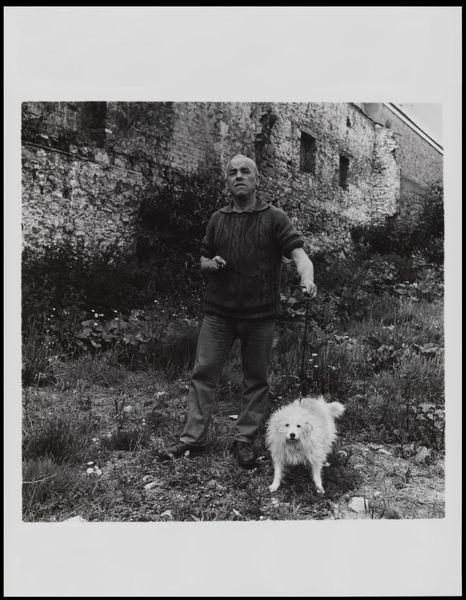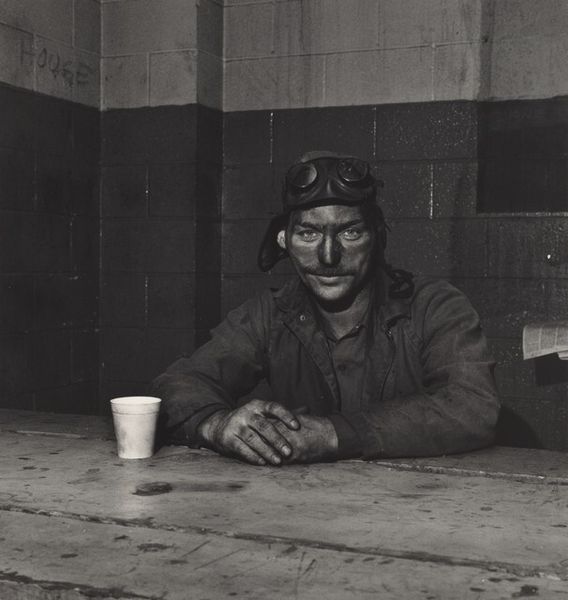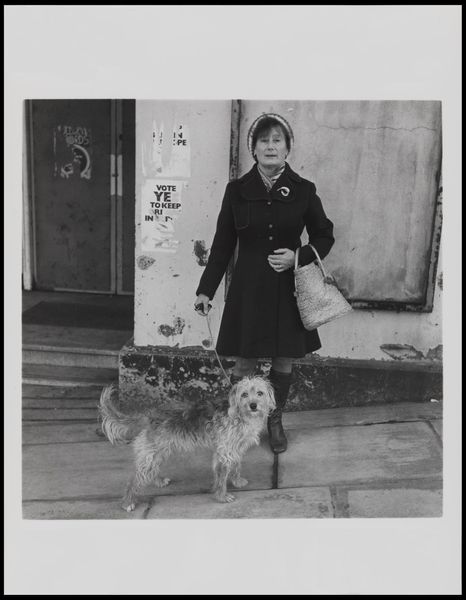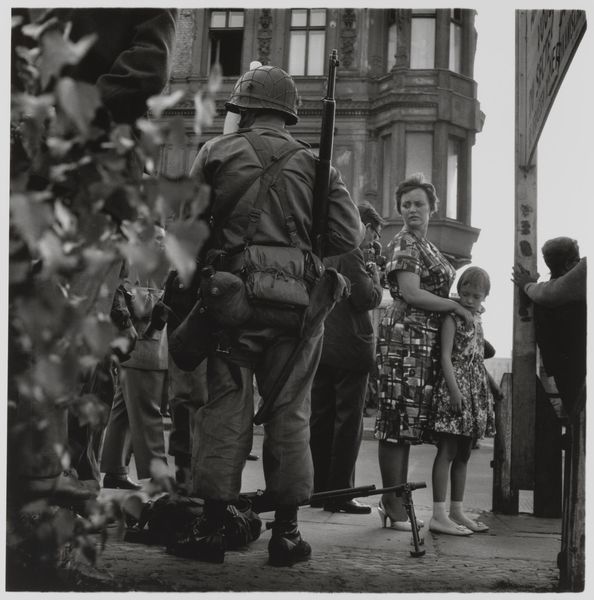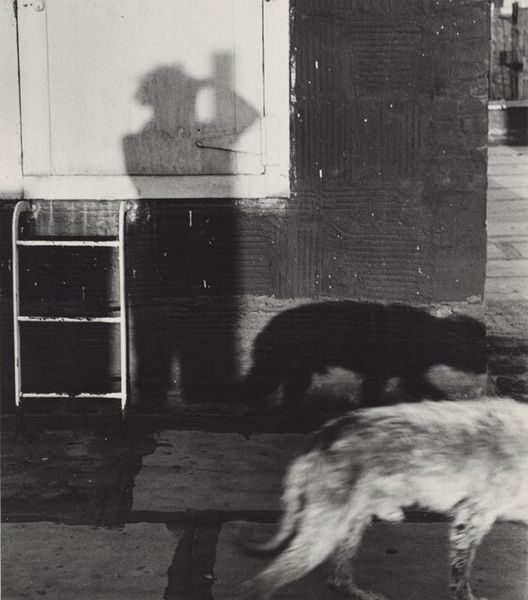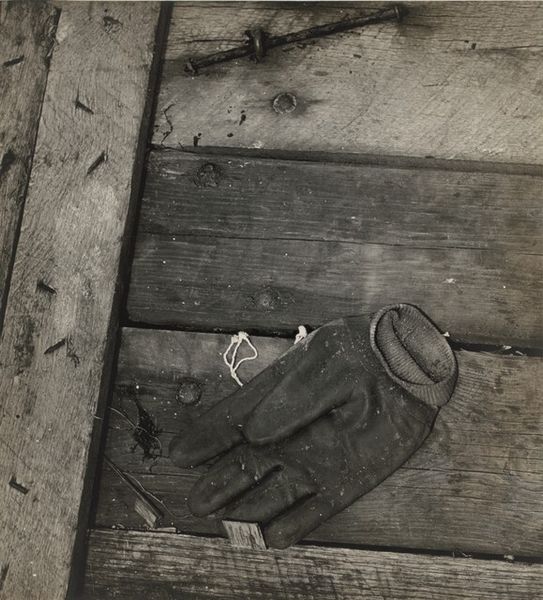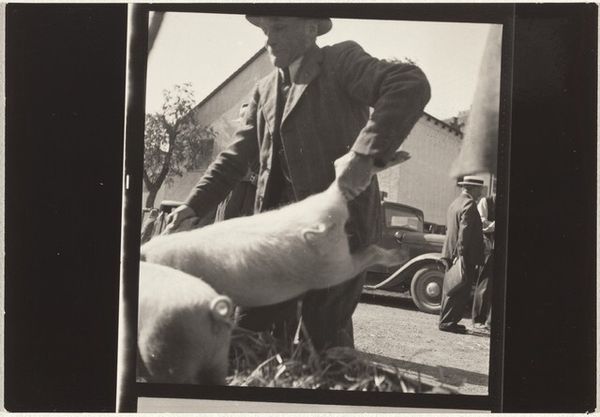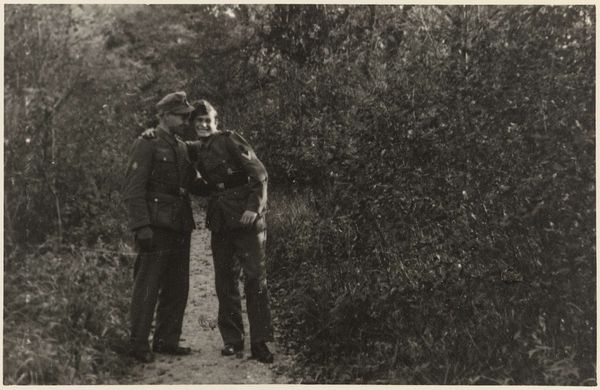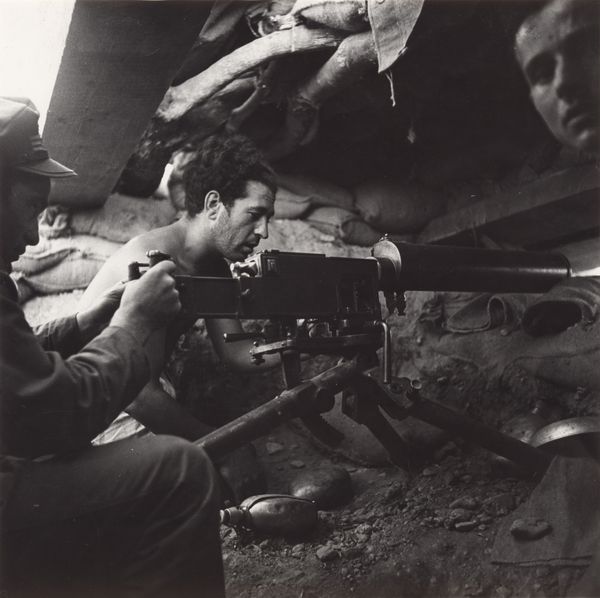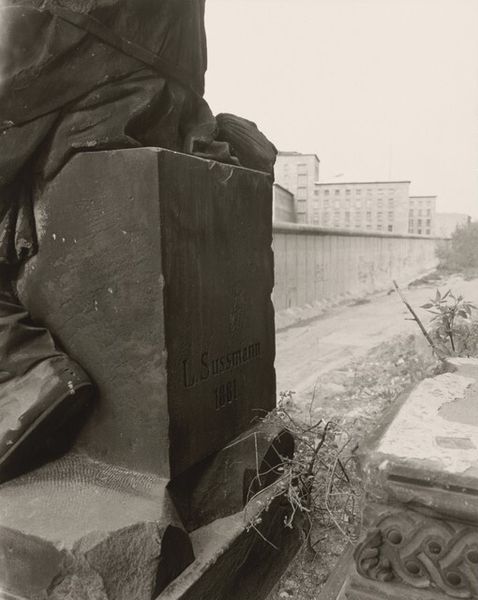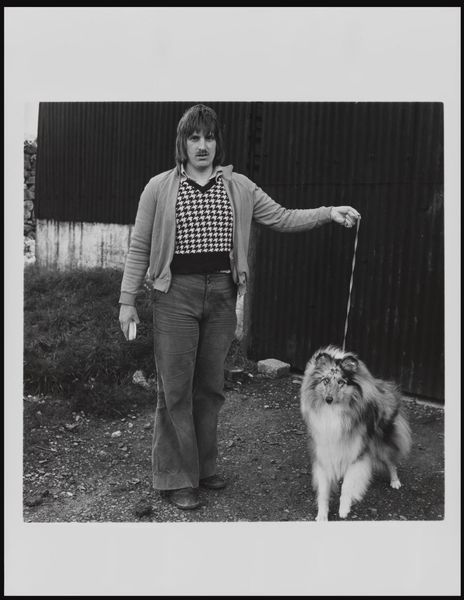
photography
#
portrait
#
black and white photography
#
landscape
#
black and white format
#
photography
#
black and white
#
monochrome photography
#
monochrome
#
realism
#
monochrome
Dimensions: image: 30.5 × 45.4 cm (12 × 17 7/8 in.) sheet: 40.4 × 50.5 cm (15 7/8 × 19 7/8 in.)
Copyright: National Gallery of Art: CC0 1.0
Curator: Larry Fink's photograph, "John Sabatine, Martins Creek, Pennsylvania," taken in 1979, immediately presents a stark, unromanticized slice of Americana. Editor: There's a beautiful intimacy here, too. Even in monochrome, you can almost smell the dust and feel the stillness of the afternoon heat. The composition draws your eye directly to the dog seeking shade under the wash tub. Curator: Fink's work often navigates class and social dynamics, and here, that is especially true, considering the landscape. His project, "The Pictures Were Made," documented this kind of experience across the country. It is really the reality for many rural communities, you know? Editor: Absolutely. The details are powerful. Note the man's figure on the left – cropped, solid, unglamorous. The weathering on the wash tub, that almost forlorn chair in the background... the setting really becomes another character. Is there anything the setting seems to represent or show about the characters involved, do you think? Curator: In documentary photography, setting is never incidental. Consider this was produced in 1979. Working class and agricultural communities in the Northeast were undergoing rapid industrial transition. The lack of gloss reminds us of what such processes extract from ordinary lives. The American dream sold through these idealized scenes in direct contrast to this photograph. Editor: But the photograph offers not only despair. Look at the dog; the loyalty and comfort it provides in an image rife with implied financial stress, I think offers something much needed. Curator: Exactly. Despite everything, there’s a presence, a quiet persistence. Even the dog reflects a life still being lived. Fink always captured people, capturing ways of finding pleasure even amid challenge. This photograph then reminds me that while times might be changing or bleak for individuals, those folks and animals continue to endure those challenges and express their personalities regardless. Editor: It really forces you to sit with uncomfortable truths, to confront the social and economic forces that shape everyday existence. I do think in a lot of ways, it challenges a sanitized, even nostalgic view of rural life that prevails still to this day. Curator: In just this single still, Fink encourages that examination by inviting us into it with intimacy. It’s really an intersectional conversation, isn’t it, regarding the subjects’ race, class, and location during this time period? The everyday often has so much to show. Editor: Definitely. It gives the viewer the space to build on it as well, which is equally as rewarding!
Comments
No comments
Be the first to comment and join the conversation on the ultimate creative platform.

